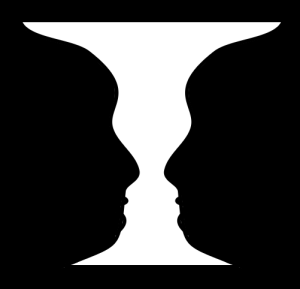Part One: Reading Media Texts
8 Codes
mediatexthack
Codes are so important to the understanding of semiotics that, if a sign does not appear to conform to a code, there is doubt that it is even a sign at all. All codes are systems, but not all systems are codes. These codes are used by both encoders and decoders of signs to help ensure that the message intended is approximate to the message received. We often use contextual cues to let us know what kinds of codes are expected or to expect – for example, an academic textbook uses words and pictures differently than a children’s storybook. They both use signs in the form of words and drawings, but how we approach understanding these signs is quite different.
Some codes, we are quite aware of. For example, iambic pentameter is a form of poetry, which is a code system in which there are certain expectations about the arrangement of word-signs in regards to both their signified/meaning (imagery) and their signifier/structure (rhythm).
Other codes are a little more subtle, and we apply them almost without being aware of it. For example, what is this?

Most people say it is Auckland, but it is more accurate to say that it is a photograph of Auckland. Photography is itself a codification of iconic and indexical symbols, but carries with it its own system of meaning making – two dimensions stand in for three, movement is frozen, time stands still. Photography is said to be a perceptual code, but one that we are so familiar with that we tend to forget it is a code and a set of signs at all.
Part of perceptual coding involves what is foregrounded and what is backgrounded (part of the coding of perception). Chandler provides us with this classic example of foreground coding. What do you see here?

If you are most familiar with Western visual codification systems, you may not at first see the two faces. This is because, in Western culture familiar with still images, our codification system for such images tends to code darker areas as background in relation to lighter areas (with a few exceptions, related to symmetry and balance). This is how a lot of optical illusions are made, they actually exploit a learned code for visual perception. But such codes exist to account for every type of sign there is.
So in summary, semiotics is a powerful tool for helping to understand and interpret how meaning is constructed and deconstructed in messages. It is now worth stepping back and looking at how semiotics fits into the wider social patterns and ideologies.
Discussion
- Semiotics is the study of signs, and how these signs ‘stand in’ for anything else. These signs are interpreted and read by readers who utilize their past experience with similar signs and codes. These codes are cultural, and are learned over time and through experience, and therefore can change over time. For example, take a look at these covers and contents from classic issues of New Zealand Woman’s Weekly. What different experiences and codes do the editors expect their readers to bring to bear reading these texts? How are they different to the codes used in the modern editions of the magazine?

